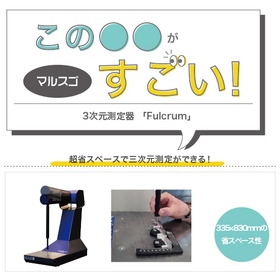Problem-Solving Materials: Utilizing 3D Data Edition 7 | Issues with 3D Printed Jigs
How can we address the challenges that emerge from utilizing 3D printed jigs? A resource for identifying and solving issues in the production site.
This document is a series that proposes solutions to various challenges faced in production sites, from identifying issues to finding resolutions. In the "3D Data Utilization Edition," we introduce various solutions to challenges in manufacturing through the use of 3D data. This document focuses on the theme of "challenges of 3D printed jigs," highlighting the issue of "static electricity" that emerges when utilizing 3D printed jigs, along with potential solutions. [Document Overview] The use of 3D printed jigs is becoming widespread due to benefits such as increased work efficiency and cost reduction, enabling effective operations. However, while many are experiencing the advantages of these jigs, there are also voices expressing that challenges have become apparent during their use. One such challenge is "static electricity." Static electricity can lead to damage from discharges or the attraction of dust, which in some cases can cause product defects. This document presents examples of challenges related to static electricity when using 3D printed jigs and offers solutions. We will introduce methods to effectively eliminate static electricity that is likely to occur during work processes. *You can download the document using the button below.*
basic information
- Measures required for "static electricity" - How to suppress static electricity and utilize jigs?
Price range
Delivery Time
Applications/Examples of results
If you are struggling with the use of 3D printed jigs or looking to utilize 3D printing more efficiently, please use this as a hint.
catalog(1)
Download All CatalogsRecommended products
Distributors
【Proposing the latest and standard equipment for manufacturing through a system】 We are the only company in Japan that can provide a comprehensive proposal for all the equipment necessary for manufacturing, including machine tools, CAD/CAM, 3D printers, 3D scanners, and other 3D digital production tools and instruments. 【Peace of mind with technical support after installation】 With our strength in technical support, we can resolve any concerns of users after installation, such as operation assistance, troubleshooting, and maintenance, all through a single point of contact. 【Extensive display of actual machines】 We have various actual machines set up, allowing you to clarify your operational image through demonstrations and tours before making a decision to implement. 【Manufacturer capabilities】 Additionally, if there are no products with the features desired by users, or if there are products with good features but weak sales power, we will leverage our manufacturer capabilities to release them as uniquely planned in-house products.



















































